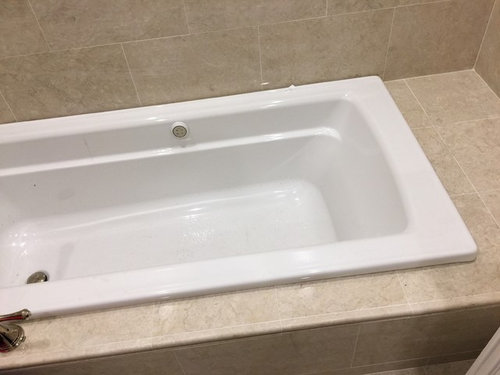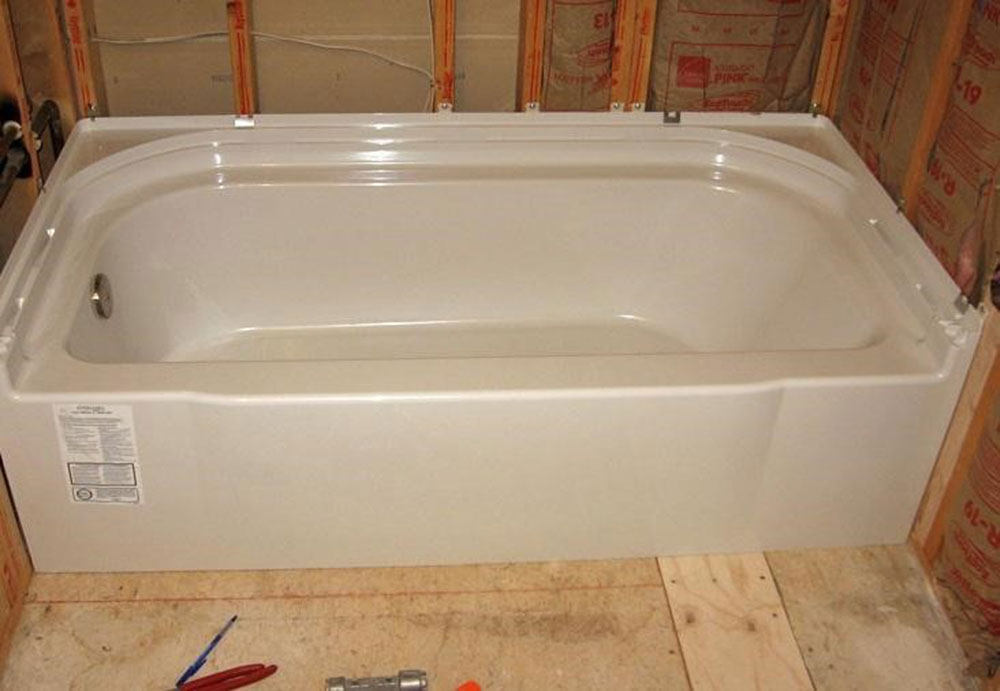How to Install a Tub (Step By Step).
How to Install a Tub (Step By Step).
Blog Article
Every person will have their unique opinion involving Tools You Need to Install a New Bathtub .

Mounting a bathtub isn't precisely brain surgery, yet it does call for solid plumbing, carpentry, and also occasionally, tiling skills. Replacing an old tub with a brand-new one is also a moderately challenging job. If the old tub is easily easily accessible, the task can move quickly; if you need to open up a wall surface to get rid of the old tub and position the new tub, the job is a lot harder. In either instance, the project is within a home handyman's skills, although you will need a helper to leave the old bathtub and also embeded in the brand-new one. Make certain you have actually certified on your own for the work and also fit trying it. Rather than hiring a contractor to take over a halfway-completed project, it is better to think about utilizing one prior to you begin. Possibilities are you may need an expert plumber to make tube connections.
This short article will assist you install a brand-new bathtub in your bathroom if you have actually currently acquired a brand-new bathtub as well as do not need to alter the arrangement of your previous supply of water pipes.
Your tools and product list must consist of the following:
Getting ready for the Installation
To start with, the sustaining framework supplied with the bath should be fitted (if called for) according to the supplier's guidelines. Next, fit the taps or mixer to the bath tub. When fitting the tap block, it is very important to make certain that if the faucet includes a plastic washer, it is fitted in between the bath and the faucets. On a plastic bath, it is also reasonable to fit a supporting plate under the faucets device to prevent strain on the bath tub.
Fit the versatile faucet connectors to the bottom of the two faucets utilizing 2 nuts and olives (in some cases supplied with the tub). Fit the plug-hole outlet by smearing mastic filler round the sink outlet opening, and then pass the electrical outlet with the hole in the bath. Utilize the nut supplied by the maker to fit the plug-hole. Analyze the plug-hole electrical outlet for an inlet on the side for the overflow pipe.
Next off, fit the end of the adaptable overflow pipe to the overflow electrical outlet. After that, screw the pipeline to the overflow face which should be fitted inside the bathroom. See to it you use every one of the supplied washing machines.
Connect the trap to the bottom of the waste electrical outlet on the tub by winding the string of the waste outlet with silicone mastic or PTFE tape, as well as screw on the catch to the outlet. Link all-time low of the overflow tube in a similar manner.The bathroom should now prepare to be fitted in its last position.
Removing Old Taps
If you require to replace old faucets with new ones as a part of your installment, then the first thing you must do is separate the water system. After doing so, activate the taps to drain any type of water continuing to be in the system. The process of eliminating the existing faucets can be fairly problematic due to the restricted accessibility that is often the situation.
Make use of a container wrench (crowsfoot spanner) or a tap tool to reverse the nut that attaches the supply pipes to the taps. Have a fabric all set for the remaining water that will originate from the pipelines. As soon as the supply pipes have been removed, utilize the exact same device to loosen up the nut that holds the taps onto the bath/basin. You will need to quit the solitary faucets from turning throughout this process. Once the taps have actually been gotten rid of, the holes in the bath/basin will need to be cleaned of any type of old sealing substance.
Prior to going on to fit the brand-new taps, compare the pipe connections on the old taps to the new taps. If the old faucets are longer than the brand-new faucets, after that a shank adapter is needed for the brand-new faucets to fit.
Mounting the Bath tub
Using the two wooden boards under its feet, place the tub in the needed setting. The wood boards are practical in equally spreading out the weight of the bathtub over the area of the boards as opposed to concentrating all the weight onto four small points.
The next objective is to make certain that the bathtub is leveled all round. This can be attained by examining the level and also readjusting the feet on the bath tub up until the spirit level reads level.
To install taps, fit all-time low of the outermost adaptable faucet adapter to the ideal supply pipeline by making a compression join; then do the same for the other faucet.
Activate the water system and also inspect all joints and new pipework for leakages as well as tighten them if needed. Fill the bathtub and additionally inspect the overflow outlet and the normal electrical outlet for leakages.
Lastly, take care of the bath paneling as explained in the supplier's user's manual. Tiling and also securing around the tub should wait until the tub has been used at the very least once as this will resolve it right into its final setting.
Fitting New Touches
If the tails of the brand-new faucets are plastic, then you will require a plastic adapter to avoid damages to the thread. One end of the connector fits on the plastic tail of the tap and the other end gives a link to the current supply pipes.
If you need to fit a monobloc, then you will certainly need lowering couplers, which links the 10mm pipe of the monobloc to the conventional 15mm supply pipe.
Next, place the tap in the installing opening in the bath/basin making sure that the washers remain in place between the tap as well as the sink. Protect the faucet in position with the maker supplied backnut. As soon as the tap is firmly in position, the supply pipes can be attached to the tails of the taps. The faucets can either be linked by using corrugated copper piping or with regular tap connectors. The previous type needs to be linked to the faucet ends first, tightening up only by hand. The supply pipelines can later be attached to the other end. Tighten up both ends with a spanner after both ends have been attached.
Tiling Around the Tub
In the location where the bath fulfills the tile, it is needed to seal the accompanies a silicone rubber caulking. This is essential as the installation can move sufficient to crack an inflexible seal, causing the water to pass through the wall in between the bathroom and the tiling, bring about problems with wetness and feasible leakages to the ceiling below.
You can pick from a variety of coloured sealers to assimilate your fixtures as well as installations. They are sold in tubes and cartridges, as well as can sealing spaces up to a width of 3mm (1/8 inch). If you have a bigger gap to fill up, you can load it with twists of soaked newspaper or soft rope. Keep in mind to always fill up the bath tub with water before sealing, to enable the motion experienced when the bathtub remains in use. The sealant can break relatively very early if you do not take into account this movement before sealing.
Additionally, ceramic coving or quadrant floor tiles can be made use of to border the bath or shower tray. Plastic strips of coving, which are easy to use and cut to size, are likewise quickly readily available on the marketplace. It is advisable to fit the floor tiles making use of waterproof or water-proof adhesive and grout.
Bathtub Installation
How Important Is A Bathtub To Your Home?
High-quality baths, showers, and other bathroom updates are necessary when considering a smart investment in your home. It’s a room that you go to every day and one that is constantly being used by guests.The bathroom is one of the top trafficked rooms in a home and also one of the most valuable in terms of home resale.
Install Piping Before Tub
You will be using your existing drain and waste vent system, but pipes required include the hot and cold water supply lines and a pipe leading to a shower head. A mixing valve and shower head are also needed. Air chambers may be required.
Position the Tub
Lower the tub into place so that the continuous flange fits against the wall studs and rests on 1’x4' or 2’x4' supports. Anchor the tub to the enclosure with nails or screws inserted through the flanges into the studs.
NOTE: Remember, bathtubs and shower stalls may require support framing. A bathtub filled with water is extremely heavy, so check building codes and framing support before installing the tub.
Assemble Drain Connections
Assemble the bathtub drain connections by connecting the tub overflow with the tub drain above the trap, not beyond it. The trap will have a compression fitting that screws over the arm of the overflow assembly.
Place a Pipe For the Shower Head
First, locate a brass female threaded winged fitting and attach it to a framing support via a screw or a nail. Then run a pipe up the wall for the shower head. Sweat or solder the other side of the brass fitting to the top of the pipe.
Attaching Hot and Cold Water Lines
Attach your water lines for both hot and cold by sweating these directly into the hot and cold ports of the mixing valve. The mixing valve will be how water enters the tub’s system, not by the pipes themselves.
Install the Spout
Extend a piece of 1/2 inch pipe, or whichever length is specified in the manufacturer’s instructions, for the tub spout. Sweat on a male threaded fitting at the end of the pipe or use a brass nipple of the proper length and a 1/2 inch cap.
NOTE: At this point you should have your rough-in plumbing work inspected before proceeding further.
Check For Leaks
Restore the water pressure and check the drain connection and the supply pipes for any sign of leaking.
estore the Bathroom Wall
Replace the wall with moisture-resistant drywall as a base for your wall covering. Seal the joints between the wall and your new tub with silicone caulk as protection against water seepage.
https://www.berkeys.com/2016/12/02/bathtub-installation-dallas/

I found that post about Installing A Bathtub while doing a search on the search engines. Loved our entry? Please share it. Help someone else locate it. Thanks for your time. Visit again soon.
Visit Our Website Report this page